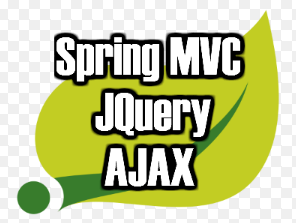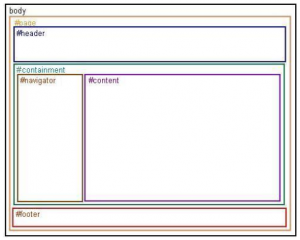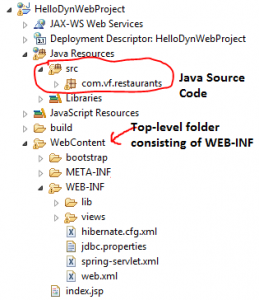Code Example – User Authentication with Google App Engine Java Applications

The article presents quick code samples that could be used to adopt Google User authentication service. These strategies have been used in the google app, http://agilesqm.appspot.com. Following key aspects are presented in this article. Web.xml configuration to restrict access to pages Use Google User service Web.xml configuration to restrict access to pages With following code in web.xml, one could restrict access to one or more pages in matter of no time. You could try on how below configuration works by accessing the page, http://agilesqm.appspot.com/createreport and you would be sent to Google login if not yet logged in on the browser. <security-constraint> <web-resource-collection> <web-resource-name>createreport</web-resource-name> <url-pattern>/createreport</url-pattern> </web-resource-collection> <auth-constraint> <role-name>*</role-name> </auth-constraint> <user-data-constraint> …
7 Reasons for Java Developers to Adopt Google App Engine

The article represents top 7 reasons why one would want to adopt Google App Engine to do quick Java applications. If you are a bunch of java developers who wants to try out your idea and give a demo to a select group of users, I would recommend you to try out google app engine. Following are top 7 reasons: Eclipse IDE Support As Google supports Eclipse IDE plugin for working with google app engine, it is very helpful to get started quickly in no time. All that is required is download Google App Engine plugin within your Eclipse and start immediately by creating a Google web application. You would find …
Code Example – How to Make AJAX Calls with Java Spring MVC

This article is aimed to provide quick code samples to rookies who would like to quickly get started with AJAX while working with Spring MVC based web application. In example below, the AJAX call is made on form submit to retrieve data from server and process it further. Step 1: Get JQuery Library Download JQuery library and place it in JS folder within one of your web assets folder. Even simpler, include following google script code and you are all set. Step 2: Create a Form Create a form such as following that would be dealt in this example. Step 3: Create AJAX Code Step 3 is about …
How to Convert JSON String to Google Datatable for Google Charts

The article presents the solution to some of the issues that I faced while converting JSON string to Google Datatable. The primary reason for me to write an article on seemingly looking trivial issue is that I ended up spending lot of time in doing research and reaching to the solution. Problem Scenario/Issues One AJAX request is made to the server to retrieve the JSON data and draw the Google chart (LineChart in this example) using this JSON data. Following is how the JSON data looks like after being sent from the server-side code: {cols: [ {id: ‘task’, label: ‘Task’, type: ‘string’}, {id: ‘hours’, label: ‘Hours per Day’, type: …
Code Samples to get started with Google Charts & Visualization APIs

The article describes on some of the aspects related with Google Visualization APIs and how to quickly get started with it. To be able to do justice with this blog and more related blogs to come in near future, I went ahead and create a project, AgileSQM, on Google App Engine (cloud) and used following technologies to create a sample chart as shown below: Google App Engine as platform with Jetty as underlying web server Google NoSQL Datastore Google Visualization APIs Spring MVC (Component model) Bootstrap (UI framework) Eclipse IDE (with Google App Engine platform) Helpful Bookmarks on Visualization APIs While getting started with Google Visualization APIs and working on …
HTML Div, Span & Table From Non-HTML Horse’s Mouth :)

Honestly speaking, I have been, primarily, focusing all my energy on programming languages such as Java, PHP, Scala, Haskell etc and Javascript recently, and not really doing enough on HTML/CSS side. However, to try some of my ideas, I do use to pick up code for HTML/CSS from different pages after searching from Google. Over a period of time, this helped me to gain a perspective on what is “div” and “span” and what is the difference between “Div” and “Table”. Interestingly, I found these topics presenting challenges to rookie HTML/CSS developers in terms of understanding when to use what? I have tried to present my understanding of “Div”, “Span” and …
Spring MVC Web with Google NoSQL Datastore on GAE Cloud

The article represents key aspects of integrating your Spring MVC web application with Google NoSQL Datastore while working on Google App Engine cloud computing platform. Additionally, it presents code samples for you to get started in a quick manner. You may access the sample application talked about in this article on this page, Welcome to GAE World! Following has been discussed: High-level architecture & design Setup NoSQL Data Model (NoSQL data entity vis-a-vis Google Datastore) Implementation including code samples such as following: Controller (HelloController) JSP (hello.jsp) DAOs (GoogleDSCommentDAO) High-level Architecture & Design Following are key technologies used for the implementation discussed in this article: Spring MVC Google Datastore (NoSQL Database) …
5 Steps to Get Spring MVC Web Application on Google App Engine

The article represents steps on what you need to do to get your first Spring MVC Hello World web application project on Google App Engine (GAE). As a pre-requisite, we recommend you to check our earlier article on How to get started with Google App Engine. The article would help you to quickly get your started with GAE based web development using Eclipse IDE. We shall work with our existing Non Spring MVC project (check this page) and convert it into Spring MVC based web application. Step 1: Spring MVC Libraries Get Spring MVC libraries within folder (war/WEB-INF/lib). Also, do not forget to get following two runtime dependent libraries: commons-logging-1.1.3.jar …
How to Get Started with Google App Engine Java Project

The article presents quick tips to get started with your next Java Web Application on Google App Engine (GAE). I was able to create my first web application on Cloud (GAE) named as “The Coders Shop”, in couple of hours, however, with little hiccups which I have mentioned in this article. Pre-requisites Following are pre-requisites to get started quickly: Create a Google account. This would be used to create an App Engine Id that would represent your web application on the web. For an app engine id, xyz, the web URL of your application will be xyz.appspot.com. You could alternatively create App Engine Id right from within Eclipse shown below. …
Java Functional Interface Explained with Code Samples

The article aims to describe functional interface in Java 8 with the help of hello world code samples. What is Functional Interface? Simply speaking, a functional interface is the plain old Java interface with JUST ONE and ONLY ONE abstract method also termed as the functional method. However, that does not stop functional interface to not contain default and static methods. Following is an example of a functional interface: @FunctionalInterface public interface HelloInterface { // Abstract method void sayHello( String name ); // Static method static void sayThanks() { System.out.println( “Thank You!” ); } // Default method default void sayHelloWorld() { System.out.println( “Hello World!” ); } } Observations: In the …
What does Interface in Java 8 Look Like?

Before we go into looking at different aspects of interface in Java 8, lets look at some of the definitions found on some of the source-of-truth websites that seem to contradict the definition of Interface in Java by defining it with a generic definition despite the fact that interface got evolved (such as below 🙂 and has got a new definition in Java 8. Whether or not, the evolved interface in Java 8 is a good move, is beyond the scope of this article. However, please feel free to share your comments. Lets look at some of the following definitions of a Java interface I took from the web at the time of …
Learn Functional Programming Before Java Lambdas, Functional Interfaces

As Java 8 got out-of-door, I wanted to quickly get on board with understanding and writing Lambda expressions and functional interfaces. But it was not easy like previous Java versions. And, the primary reason is the different programming paradigm one needs to understand in order to make use of Java Lambdas and functional interfaces concepts. And, this programming paradigm is functional programming. In one of the pages on functional programming (FP) I came across, it spoke about the change in thinking/mindset one, especially OOP developer, needs to bring in order to do a great job with functional programming. This is primarily because in OOP world, objects are first class citizens …
Java 8 Lambda Expressions Examples using Calculator Implementation

The article demonstrates the Lambda expressions using Calculator (interface) code samples. It also makes use of Functional interfaces from java.util.function package to demonstrate Calculator implementation using BiFunction and BinaryOperator interfaces. Calculator Implementation Demonstrating Lambda Expressions The Calculator methods implementation would be explained using both, traditional approach and the approach making use of Lambda expressions. Traditional Approach Using traditional approach, many would have gone implementing Calculator add, substract, multiply and divide function based on following: Define a Calculator interface with four methods namely add, subtract, multiply and divide; Another approach could be to create a single method with an operation flag and provide conditional implementation based on flag. Create a CalculatorImpl …
Java Unit Testing Interview Questions

The article presents some of the frequently asked interview questions in relation with unit testing with Java code. Please suggest other questions tthat you came across and I shall include in the list below. What is unit testing? Which unit testing framework did you use? What are some of the common Java unit testing frameworks? Ans: Read the definition of Unit testing on Wikipedia page for unit testing. Simply speaking, unit testing is about testing a block of code in isolation. There are two popular unit testing framework in Java named as Junit, TestNG. In SDLC, When is the right time to start writing unit tests? Ans: Test-along if …
Gradle War Configuration for Eclipse Spring Web Application Project

The article describes the configuration one would need to create WAR file for an Eclipse-base web application (Dynamic Web) project. Below code represents whats needed to compile your Java Eclipse-based web application project and create WAR file which can be deployed later, on any Java server such as Tomcat. Pay attention to some of the following facts: repositories: “repositories” is referred in a local directory rather than external repository such as MavenCentral etc. sourceSets: sourceSets define the path under which Java source code exists. It MUST BE NOTED that failing to define this would have Gradle look into Maven-based folder such as “src/main/java” for source code that would eventually result …
Web Application Folder Structure for Spring MVC Web Projects

The article lists down two most commonly used folder structure for a Spring MVC/Hibernate based web application project. In fact, this folder structure could be used with any other MVC framework like Spring. Following are different two folder structures described later in this article: Eclipse-based Web Application (Dynamic Web Project) Maven-based Web Application Project Eclipse-based Web Application (Dynamic Web Project) As per this Eclipse page, Dynamic web projects contain dynamic Java EE resources such as servlets, JSP files, filters, and associated metadata, in addition to static resources such as images and HTML files. Following is how the folder structure looks like on the disk: src packages (com.orgid.abc) WebContent CSS/JS Folders (Publicly …
I found it very helpful. However the differences are not too understandable for me